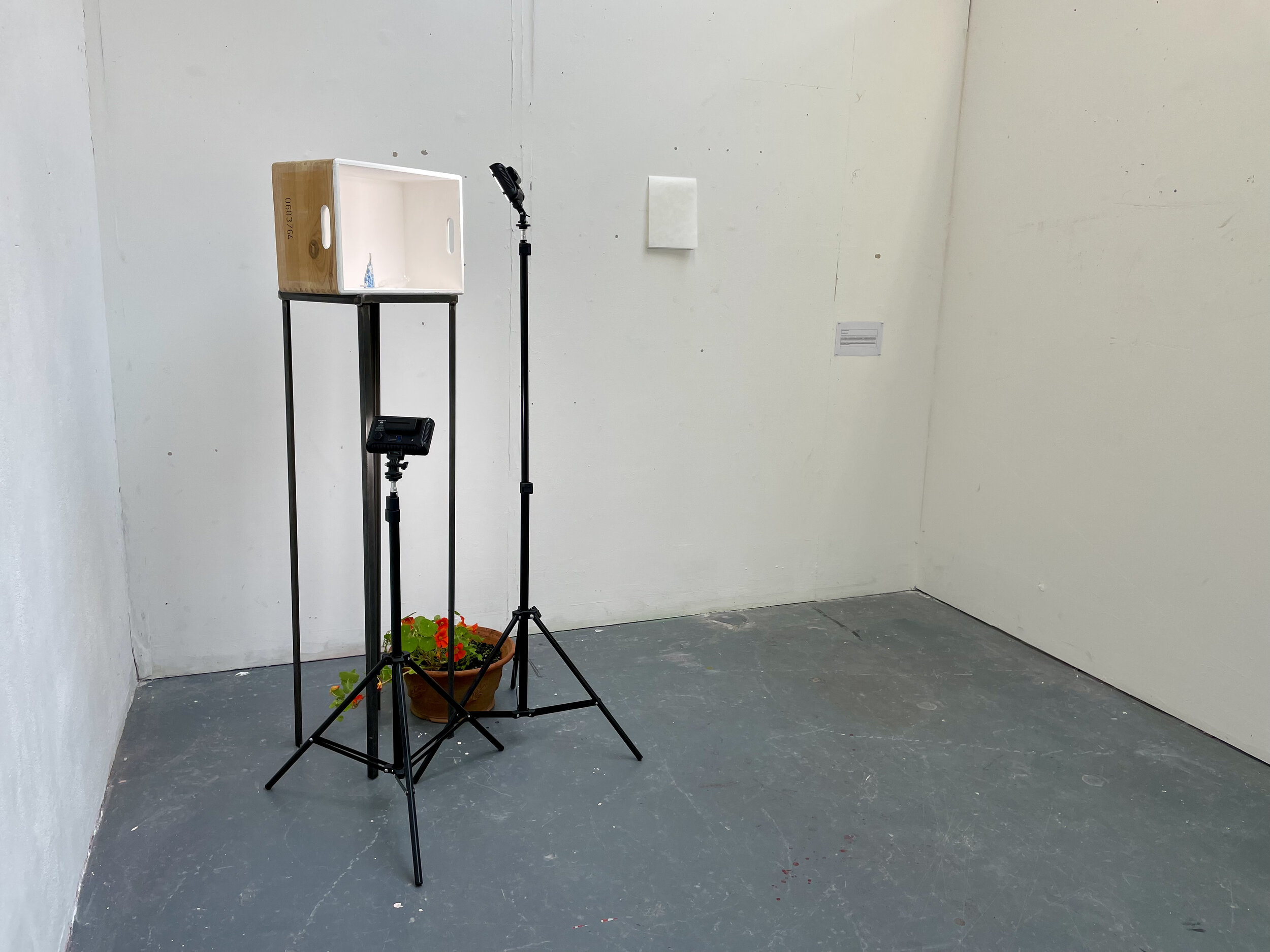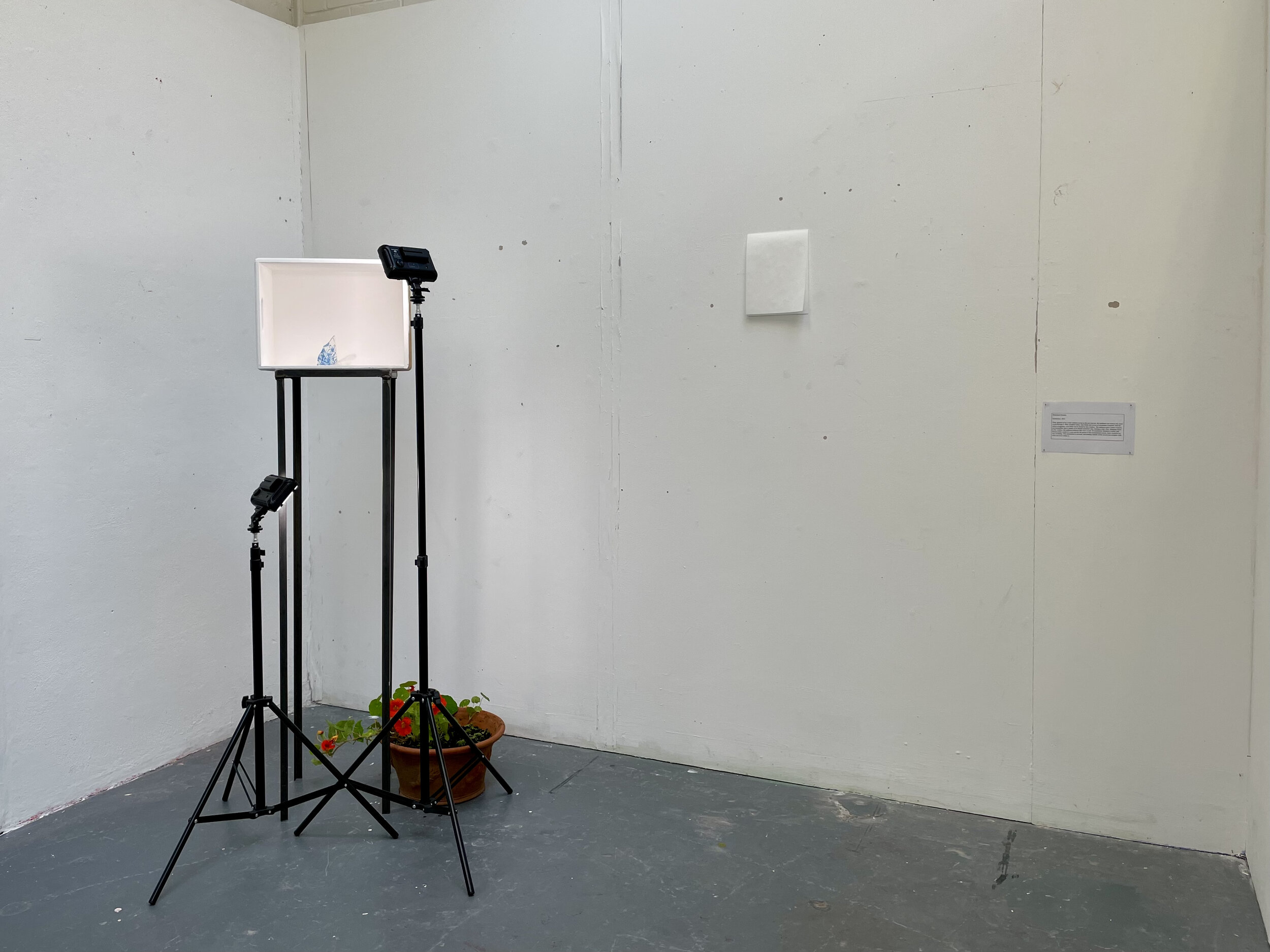CURATORIAL PROJECT: Hyperreality
“...by dying, the object takes its revenge for being “discovered” and with its death defies the science that wants to grasp it”
‘Hyperreality’ was a working title for a group show. The objective of the project was to meet as a group to discuss how to interpret and contextualize the theme and make plans to realise our curatorial concepts. We were given the choice to work collaboratively or independently but either way to think about how the work could be viewed and therefore curated in the space.
Baudrillard writes that ‘photography and cinema contributed in large part to the secularisation of history, to fixing it in its visible, objective form at the expense of the myths that once traversed it.’ He suggested that cinema approaches an absolute correspondence with itself, and is the very definition of the hyperreal. I recalled an image I had taken during the process of individually photographing the discovered and excavated objects for ‘Untitled #1 ( )’.
Re-enacting the process of recording each found object I was intrigued by the manipulated and altered status.
As the new work evolved, I made a decision to remove the camera. With the lights remaining, the viewer replaces the position of the camera?
Untitled #5 (hypperreality), 2021
Over-lit and raised, the discovered objects are subjected to extreme focus. Becoming objective, the work highlighted the paradox that by being preserved and upheld they were no longer themselves but a simulacrum.
“To simulate is to feign to have what one doesn’t have.”
It implies an absence, and ‘threatens the difference between the “true” and the “false”, the “real” and the “imaginary”’ (Baudrillard). Staged beneath, the plant and soil represents the underworld from where the objects came, and to where they will return in defiance of knowledge…. never grasped.
First thoughts as correspondence evolved during the development of the work was the connection each work had to landscape and flowers. When the work came together it became apparent the white rectangular viewing platform echoed across each. One, a box providing a safe space for objects dug up from the earth, another, a piece of tracing paper floating in front and obscuring an image of an imagined garden, and the third, text describing a landscape written on a rectangular piece of paper.



As the group curated the show a decision was made (probably be me) to remove the lights from ‘Untitled #5’. In order to keep in line with the quietness of the works as a whole, it seemed appropriate. In the space, the works were hung and placed on one wall, relating directly to each other, as if one work. Later questions were made to the appropriateness of these decisions. Would it have been an improved outcome to space the work, to allow each work to occupy a wall each? Was removing the lights appropriate, did something become lost as a result of this decision?
Bibliography
Baudrillard, J (1994), ‘The Precession of Simulacra’ In: Simulacra and Simulation. USA: The University of Michigan Press. pps. 1-7.



